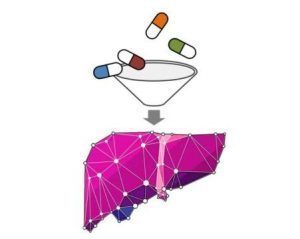- Home
- Editorial
- News
- Practice Guidelines
- Anesthesiology Guidelines
- Cancer Guidelines
- Cardiac Sciences Guidelines
- Critical Care Guidelines
- Dentistry Guidelines
- Dermatology Guidelines
- Diabetes and Endo Guidelines
- Diagnostics Guidelines
- ENT Guidelines
- Featured Practice Guidelines
- Gastroenterology Guidelines
- Geriatrics Guidelines
- Medicine Guidelines
- Nephrology Guidelines
- Neurosciences Guidelines
- Obs and Gynae Guidelines
- Ophthalmology Guidelines
- Orthopaedics Guidelines
- Paediatrics Guidelines
- Psychiatry Guidelines
- Pulmonology Guidelines
- Radiology Guidelines
- Surgery Guidelines
- Urology Guidelines
AIIMS releases guidance on Antibiotics in Liver Abscess

All India Institute of Medical Sciences, Delhi has released AIIMS Antibiotics Policy which has been prepared by the Department of Medicine with Multidisciplinary collaboration. The guidance for Gastroenterological Infections includes Antibiotics in Liver Abscess the salient features of which have been authored in the guidance.
When to suspect:
Fever with/without chills, constitutional symptoms
Right upper quadrant tenderness
Intercostal tenderness can be present
Right shoulder pain
Hepatomegaly
Diarrhoea- present in 23% of patients of amoebic liver abscess
Nausea, vomiting
Right pleural effusion and cough-30% of patients
Ascites, Jaundice-26% of patients
Leukocytosis with raised liver enzymes (AST, ALT, ALP)
How to confirm:
Blood Culture- Positive in 50% of patients
USG- Variable echogenic lesion (Sensitivity- 86-90%)
CT- Hypodense lesion (Sensitivity>95%)
Gram stain and bacterial culture of aspirate
Serum amoebic serology- may remain positive years after infection.
E. histolytica antigen- Serum, stool and aspirate
Pyogenic Liver Abscess
Aetiology:
Gram-negative aerobes: E coli, Klebsiella pneumoniae, Pseudomonas aeruginosa, Acinetobacter, Citrobacter
Gram-positive aerobes: Staphylococcus aureus, Streptococcus, Enterococcus
Gram-negative anaerobes: Bacteroides, Fusobacterium
Gram-positive anaerobes: Clostridium
Treatment:
Inpatient: [Ceftriaxone 1g IV BD plus Metronidazole 500 mg IV TDS] OR [Amoxicillin-clavulanate 1.2g IV TDS]
Outpatient: [Amoxicillin-clavulanate 625mg TDS] OR [Cefixime 200mg BD Plus Metronidazole 400 mg TDS]
Special Considerations:
Hemodynamic instability/ Multi-organ involvement/Suspected ESBL producer:
Piperacillin+ Tazobactam 4.5 g IV QID or Cefoperazone+ Sulbactam 2 -3 gm IV BD or Imipenem+ Cilastatin 500mg IV QID or Meropenem 1-2g IV TDS
High suspicion of Gram-positive agent- MRSA or resistant Enterococcus: Additional Vancomycin 1g IV BD
Amoebic Liver Abscess: E histolytica (72% serology positive)
IV: Metronidazole 750 mg IV TDS for 7-10 days
Oral: Tab Metronidazole 800 mg PO TDS for 7-10 days or Tinidazole 2 g OD for 3-5 days
Luminal Amoebicides: After a response to initial therapy; Diloxanide furoate 500mg TDS orally for 10 days.
Percutaneous drainage: Often useful as an adjunct with antibiotics
Left lobe abscess
High risk of rupture / sub-capsular location
Ruptured liver abscess
Size > 5cm
No response to antibiotic
Unclear diagnosis/ negative workup
Multiple aspirations may be required in case of re-accumulation.
Endoscopic drainage: In case of abscess communication with the biliary tree, ERCP and sphincterotomy and drainage can be done.
Surgical drainage- (open or laparoscopic procedure):
• Large multiloculated abscess >5cm in size
• Abscess rupture with peritonitis
• Failed percutaneous drainage and antibiotic therapy
Special Remarks:
If the etiological diagnosis of liver abscess is not made, empiric coverage should cover both pyogenic and amoebic liver abscess. In such a situation, if antibiotics with anaerobic cover (amoxicillin-clavulanate, piperacillin – Tazobactam, cefoperazone- sulbactam, imipenem or meropenem) are used concurrently with metronidazole, the latter may be stopped after 7-10 days.

Disclaimer: This site is primarily intended for healthcare professionals. Any content/information on this website does not replace the advice of medical and/or health professionals and should not be construed as medical/diagnostic advice/endorsement or prescription. Use of this site is subject to our terms of use, privacy policy, advertisement policy. © 2020 Minerva Medical Treatment Pvt Ltd